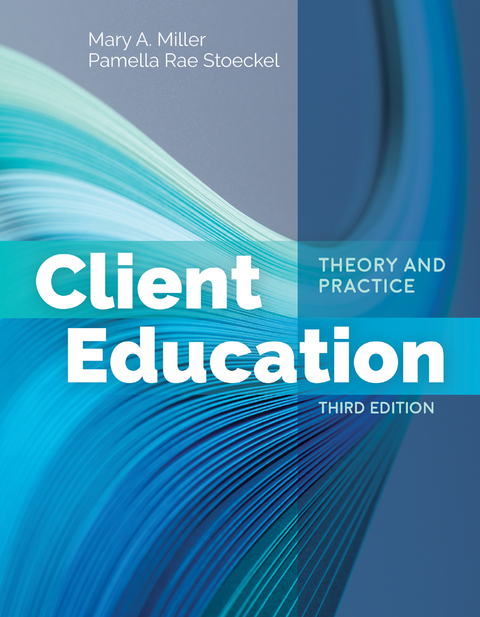Description
Efnisyfirlit
- Cover Page
- Title Page
- Copyright Page
- Dedication
- Contents
- Preface
- Part I A Framework for Health Education
- 1 Overview of the Miller–Stoeckel Client Education Model
- Introduction
- Purposes and Goals of Health Education
- The Miller–Stoeckel Client Education Model
- Nurse as Educator
- Client as Learner
- Nurse–Client Relationship
- Client Education Outcomes
- Definitions
- Context for Health Education
- Summary
- Part II The Learning Process
- 2 Thinking and Learning
- Introduction
- Domains of Learning
- Thinking
- Ways of Thinking
- Reflecting on Your Thinking
- Promoting Thinking in Clients
- Styles of Thinking and Learning
- Summary
- 3 Theories and Principles of Learning
- Introduction
- Value of Theory
- Theories of Learning
- Behavioral Views of Learning
- Cognitive Views of Learning
- Social Cognitive View of Learning
- Principles of Learning
- Summary
- Part III Assessment for Health Education
- 4 Learner and Setting Assessment
- Introduction
- Psychological Factors
- Biological Factors
- Social Factors
- Intellectual Factors
- Environmental Factors
- Summary
- 5 Child Learner
- Introduction
- Biologic Characteristics, Psychosocial Stages, and Developmental Tasks
- Implications for Health Education
- Orientation to Learning
- Pedagogy
- Educating Clients with Disabilities
- Educating Families
- Educating Groups and Communities
- Educating Health Team Members
- Summary
- 6 Adult Learner
- Introduction
- Biologic Characteristics, Psychosocial Stages, and Developmental Tasks
- Implications for Health Education
- Orientation to Learning
- Andragogy
- Experiential Learning
- Educating Clients with Disabilities
- Educating Families
- Educating Groups and Communities
- Educating Health Team Members
- Summary
- 7 Older Learner
- Introduction
- Ageism
- Psychosocial Stages, Developmental Tasks, and Physiologic Changes of Late Adulthood
- Implications for Health Education
- Ethnic Elderly
- Educating Clients with Disabilities
- Educating Families
- Educating Groups and Communities
- Educating Health Team Members
- Summary
- 8 Culturally Diverse Learner
- Introduction
- Characteristics of Culturally Diverse Learners
- Cultural Competence and Cultural Humility
- Culturally Congruent Client Education
- Culturally Specific Client Assessments and Concerns
- Cross-Cultural Communication
- Linguistically and Culturally Appropriate Teaching Strategies and Instructional Materials
- Summary
- 9 Nurse Educator as Learner
- Introduction
- Overview of the Continuum of Learning
- Role of the Nurse as Educator
- Advanced Role of Nurse as Educator
- Nurse Educators in the Academic Environment
- Nurse Educators in the Practice Environment
- Becoming an Effective Nurse Educator
- Lifelong Learning
- Summary
- Part IV Planning and Implementing Client Education
- 10 Client Education Plan
- Introduction
- Client Education Plan
- Mission
- Goals
- Learning Outcomes
- Learning Objectives
- Selection of Content
- Selection of Evaluation Methods
- Case Example: Mrs. Rosa Lopez
- Summary
- 11 Teaching Strategies
- Introduction
- Types of Teaching Strategies
- Teacher-Directed Strategies
- Teacher-Facilitated Strategies
- Learner-Directed Strategies
- Selecting the Right Teaching Strategy
- Case Example: Mrs. Rosa Lopez
- Summary
- 12 Instructional Materials
- Introduction
- Health Literacy
- Types of Instructional Materials
- Printed Materials
- Multimedia
- Internet and World Wide Web
- Selecting Instructional Materials
- Clients with Disabilities
- Evaluating Effectiveness of Instructional Materials
- Copyright Issues in Using Instructional Materials
- Summary
- Part V Client Education Outcomes
- 13 Formative Evaluation
- Introduction
- Evaluation
- Formative Evaluation: Evaluation of the Client Education Plan
- Formative Evaluation: Evaluation of the Learning Environment
- Formative Evaluation: Evaluation of the Nurse–Client Interaction
- Case Example: Mrs. Rosa Lopez
- Summary
- 14 Summative Evaluation
- Introduction
- Summative Evaluation: Evaluation of Client Learning
- Summative Evaluation: Evaluation of Educational Effectiveness
- Summative Evaluation: Evaluation of Integration of Learning into Daily Living
- Case Example: Mrs. Rosa Lopez
- Summary
- 15 Application of the Miller–Stoeckel Client Education Model
- Introduction
- Overview of the Miller–Stoeckel Client Education Model
- Conceptual and Theoretical Support
- Definition of Major and Embedded Concepts in the Model
- Propositions of the Model
- Assumptions of the Model
- Application of the Model
- Summary
- Appendix: Physical Changes Associated with Aging by System
- Index






Reviews
There are no reviews yet.